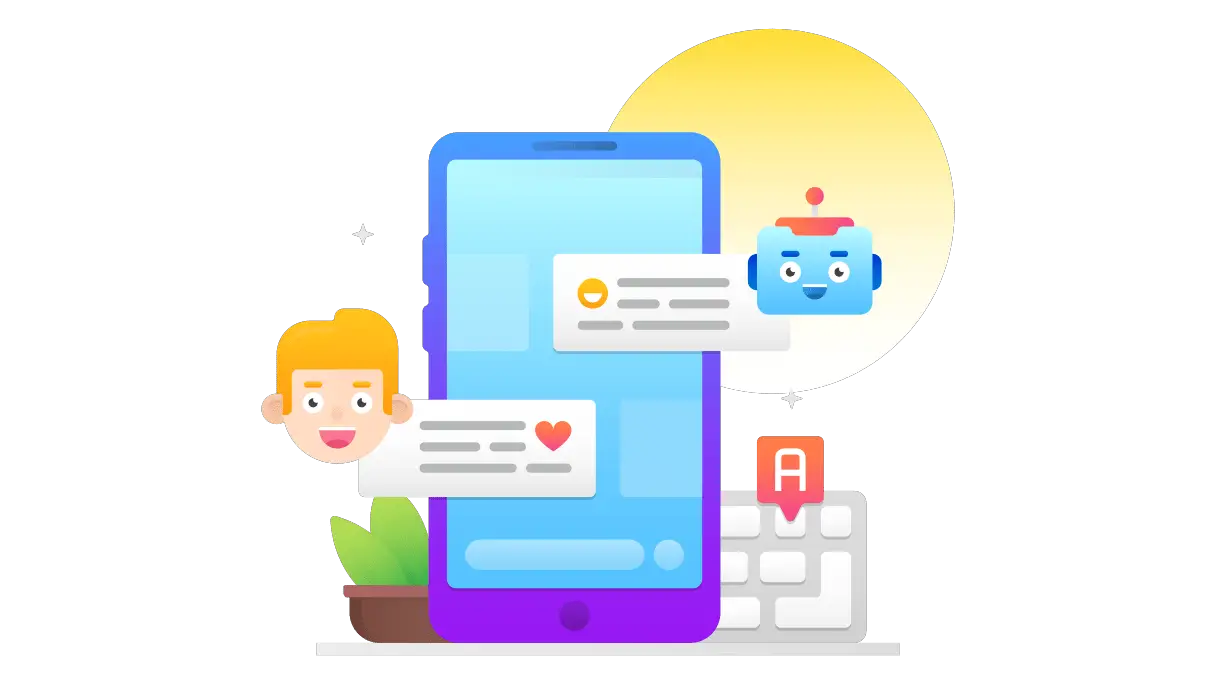Chatbots are automated applications that can communicate with humans in a common language through a text or voice-based audio communication.
Chatbots work on AI-based technology, which can mimic humans and help them solve their queries related to a particular issue on the platform.
It sounds interesting, a machine-driven application that solves human queries, but how are these chatbots developed and what kind of Artificial Intelligence techniques are used in the development of chatbots?

1. Natural Language Processing (NLP)
Natural language processing is one of the most fundamental AI techniques used in chatbots. This is the basis for understanding how artificial intelligence is being used in chatbots.
Primarily a subfield of linguistics, computer science, information engineering, and artificial intelligence, natural language processing is concerned with the interaction between computer and human languages.
Specifically, it refers to how to program computers to process and analyze large amounts of natural language data. When applied to chatbots, it allows them to speak and understand people as a language choice.
The most important thing to understand about this is that it gives chatbots the ability to operate on an “intent-based” system, where they can understand and focus on user intentions.
2. Named Entity Recognition (NER)
Another important AI technique used in chatbots is called entity recognition. In a subtask of information extraction, NER attempts to find and classify named entities in text such as a person’s name, location, organization, contact details, time expressions, quantities, monetary values, percentages, etc.
This technique can be done in several ways. When building any conversational bot or dialogue system, one of the following approaches will be used: generative-based, retrieval-based, or heuristic-based.
All these approaches rely on NER in one way or another and use it to accomplish their communication tasks.
3. Artificial Intelligence in Chatbots
A virtual assistant is also one of the best examples, acting like a chatbot that answers common human questions through voice commands.
Google Assistant, Siri, and Amazon Alexa are popular virtual assistance devices and services offered by tech giants using the same technology used in chatbot development.
A chatbot is not an artificial intelligence-powered application, instead, it is more based on machine learning where developers use large amounts of chatbot machine learning training data and feed it to the right algorithm for the best response.
4. Machine Learning in Chatbot
The data consists of a collection of similar questions with the most relevant answers given while solving customer problems.
A chatbot learns what are the best answers to relevant questions or what actions to take if an irrelevant question comes up while interacting with humans.
However, dialogue selection is a predictive problem, and the use of a heuristic program to identify the most appropriate response template may involve simple algorithms such as keyword matching or machine learning, or deep learning.
But with more qualitative and quantitative chatbot training data and NLP integration, a chatbot can be tailored to business operations for any industry or company.
5. Augmentation capacities
In addition to their ability for conversation, AI chatbots offer other real benefits. For example, AI and chatbots can be used to monitor each conversation and gain insights and learn from them how to perform better in the next conversation.
Called augmentation, this means the machine doesn’t need to do the entire conversation. These days, chatbots can “step in” for routine tasks like answering simple questions or taking payment details from an organization’s knowledge center.
6. Conversational AI in Chatbots
Are you familiar with Siri, Google Assistant, or Amazon Alexa? These useful assistants that many of us now rely on for everyday tasks are a good way to illustrate how conversational AI is increasingly playing an important role when it comes to chatbots.
The inclusion of AI increases customer engagement, and as most people have now experienced first-hand, voice experiences and digital assistants such as Google Assistant, Siri, and Amazon Alexa make dialogue more exciting.
7. Problem-Solving in Chatbots
In other cases, the speed of real-time analytics that today’s chatbots are capable of means that they can issue alerts when they detect a problem on the horizon.
Thanks to sentiment analytics, for example, a chatbot can now understand when a customer is unhappy and ask a human operator to take over the chat or call.
Chatbots are also increasingly present in collaborative work environments such as Slack, where they can monitor interactions between teams and provide relevant facts or statistics at relevant points.
In the future, chatbots will likely be able to take things even further and suggest strategies and tactics to overcome business problems.
8. Recurrent neural networks (RNN)
A recurrent neural network is a deep learning model dedicated to handling sequences.
An encoder RNN imagines a sequence of context tokens one at a time and updates its hidden state. After processing the entire context sequence, it creates a final latent state, which incorporates context sense and is used to generate a response.
The Recurrent Neural Network-based Sequence-to-Sequence (Seq2Seq) model is one of the most researched models for implementing artificial intelligence chatbots and has made significant advances.










